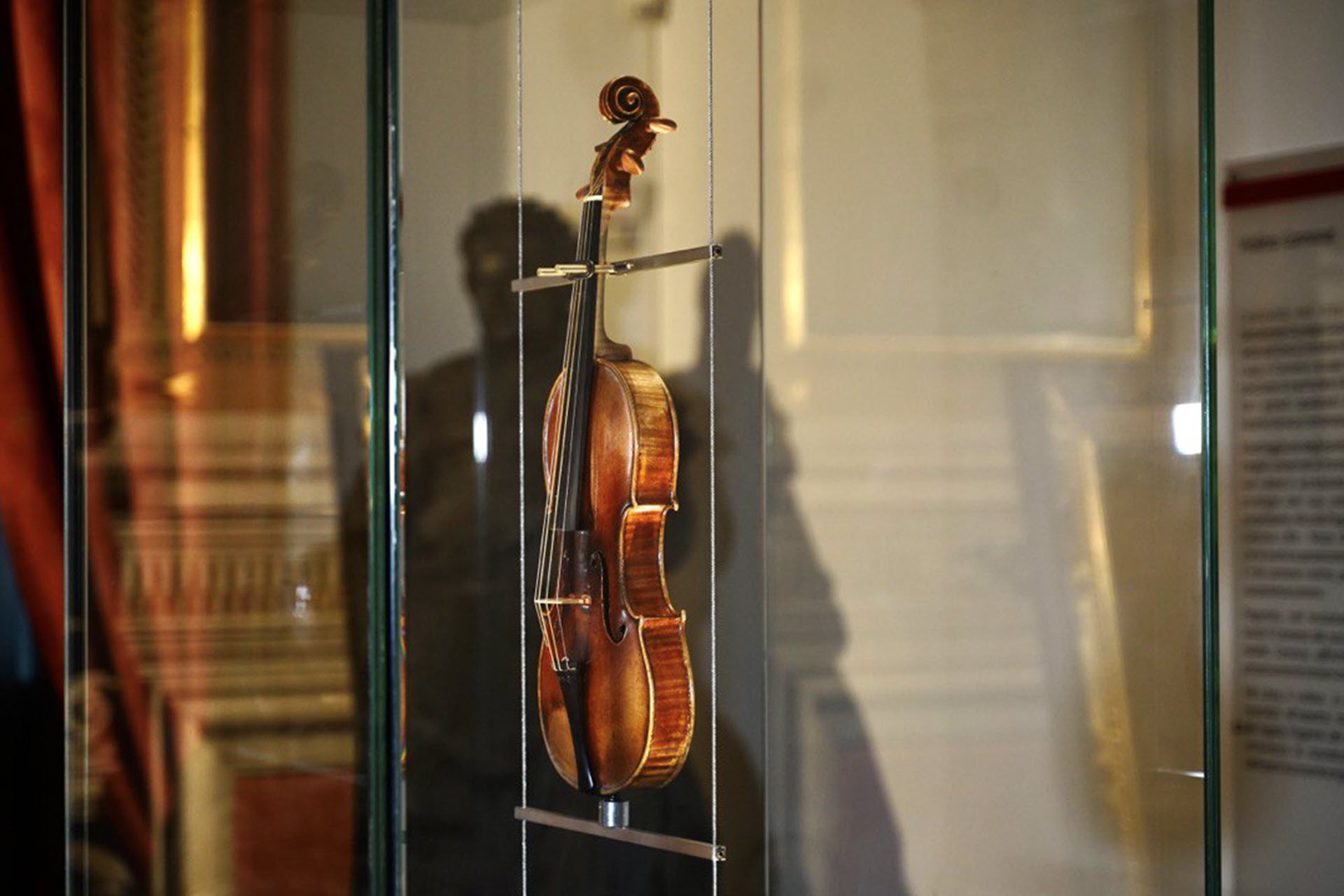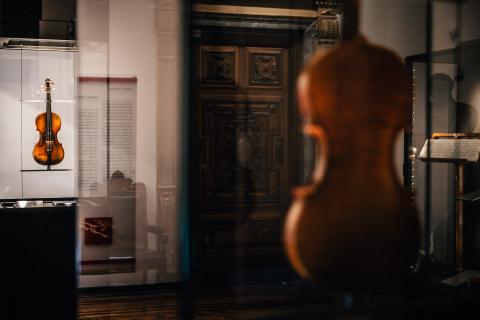The historical figure of Giuseppe Guarneri 'del Gesù'
by Carlo Chiesa (violin maker)
When I look at a violin, as a violin maker, I take it in my hand and consider various aspects of it. I look at the workmanship, the technical quality of the execution, I think about how it will sound. I also think about the skills as a craftsman and as an artist of the person who made it, of the person who worked on it. In the end, precisely because I am a luthier, I am very interested in this aspect, I am interested in the person who made that instrument, and I happen to go back in my mind, or sometimes in my imagination, to the person behind the object that I find myself holding in my hand. And this is true for modern instruments, made by luthiers who are close to us in time and culture, but even more so for ancient ones. And somehow I find an affinity that binds me to people who made other instruments in the past. Perhaps this is why I am passionate about the history of violin making: because I like to think of these people, these ordinary men, who lived a life like mine, ours, made up of everyday life, of events great and small, a life sometimes much simpler than history, which has often made these figures mythical, would have us believe, distancing them from us.
The figure of Giuseppe Guarneri 'del Gesù' is a paradigmatic example in this field, an example of the distortion of reality. His real historical figure has been completely distorted by a strongly ideologised romantic historiography, to the point that even today beliefs persist about him that have no real basis, at least as far as we have managed to reconstruct them through historical research dedicated to him, conducted using scientific methods and costing months of work in the archives. Allow me therefore to speak briefly about the historical figure of Giuseppe Guarneri 'del Gesù', about the real life of the person who built this instrument.
Giuseppe Guarneri was born in the late 17th century into a family of lute-makers. His grandfather was a luthier, his father was a luthier, his uncle was a luthier, his brother would be a luthier. And what luthiers! If we take the 20 best luthiers in history, these four gentlemen make the list. It seems reasonable to assume that his path was set from birth. Certainly Giuseppe was educated as a luthier and trained in the family workshop.
But suddenly, having passed adolescence and reached youth, he apparently stopped being a luthier. The reasons for this choice, as well as an exact dating of this event elude us, no matter how much research we have done. Countless hypotheses can be formulated. What seems certain is only this: having reached early adulthood, Giuseppe interrupted his activity as a luthier for a few years.
Around the age of thirty, however, he returned to making instruments. His luthier brother, Pietro, had moved to Venice, his uncle, a luthier in Mantua, had died. In Cremona, in the hometown of all the family's violin makers, only the father was left, who was getting by, running a seemingly unsuccessful workshop. Archive documents speak of economic difficulties and a less than rosy situation. Against this background, Giuseppe Guarneri returned to violin making and many clues suggest that one of the reasons for this choice, or at least one of the consequences, was that he began to help his father, who was not very old but had health problems. A very different figure of a man from the legendary one, which indicates 'del Gesù' as the cursed violin maker, the violin maker who ends up in prison for stabbing someone else. In reality, in the ten years following this period, from 1730 to 1740, Guarneri worked regularly and lived in the centre of Cremona, a short distance from his father's house, where the family workshop had been open for many decades. In terms of work, he made instruments in the purest Cremonese style, violins that looked to Stradivari, perfect from a technical point of view, very beautiful, very traditional in their design and proportions, but always introducing something of his own into the construction.
Around the age of 35-38, Guarneri 'del Gesù' reaches a turning point, he seems almost to free himself from the chains of tradition that had held him back until that point. He began to make increasingly innovative instruments, looking much less at the technical precision of construction, but clearly conducting continuous research into the sound of the instruments. And it was during this brief period covering the last years of his life, which ended very early in 1744 at the age of 46, that Guarneri 'del Gesù' made his most characteristic instruments: highly original violins, in many respects openly at odds with the canons of the Cremonese tradition, built with a freedom of execution that made them appear 'wild'.
Formally, he does not deviate from the construction method he had been taught and holds firm to certain fixed points of the system, but he no longer devotes so much attention to formal cleanliness, concentrating rather clearly on the search for a better sound, or a particular sound, in each instrument. And so it is that in each instrument, in each violin, he inserts innovations, lengthening the effe, shifting the tips a little, modifying the bowing, probably also working on the thickness of the plates and backs.
During this period, archive documents tell us that he witnessed a notarial deed of a priest, lived with his wife regularly taking communion every year in his parish. In 1744, he died after receiving the sacraments. A normal, very quiet figure, very different from the legendary figure that romanticism has created and handed down: the figure of a man who went his own way, dedicating a great passion, I believe, to his work as a luthier.
The only slightly strange note, perhaps, is the one concerning Guarneri 'del Gesù''s wife, an Austrian woman who arrived in Cremona from Vienna who knows how, perhaps in the army retinue, who in the Po Valley city marries this young luthier and perhaps helps him in his business. The couple never had children, the wife survived her husband, remarried a soldier in the Austrian army and left Cremona.
With Guarneri 'del Gesù', the story of a dynasty of violin-makers, which lasted three generations, comes to an end, having been a protagonist in the final phase of the great season of classical Cremonese violin-making. And this conclusion is even more significantly underlined, also in a symbolic way, by this somewhat mysterious widowed wife who leaves and returns to her homeland outside Italy.



